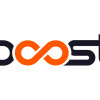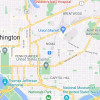4G Networks Tested: WiMAX vs. HSPA+
We chose six locations around Philadelphia: five downtown, and one in the 'burbs. At each location, we tried each technology, ran three different speed tests, and for each test, used at least three different test servers located in different but nearby cities. These were then averaged to get the speed for that technology and location combination.
If we tried this in a different city, the results might be a bit different, and even just using slightly different locations in Philadelphia would change the overall average a bit. However, having performed well over 300 tests total, in a variety of locations, we feel confident that our results reflect what users should expect.
The bottom line is that Sprint's WiMAX network and T-Mobile's HSPA+ network delivered roughly similar download speeds, just shy of 3 Mbps on average. These are real-world, average speeds, not ideal numbers skewed by a marketing department. 3 Mbps is easily twice as fast as your typical real-world speed with 3G, and faster even than many home DSL connections.
| Tech | Averages | Location | Down (kbps) | Up (kbps) | |
| Sprint WiMAX | A | 2,924 | 679 | ||
| 2,785 | kbps down | B | 3,664 | 436 | |
| 589 | kbps up | C | 3,139 | 978 | |
| 199 | ms latency | D | 4,066 | 971 | |
| E | 2,170 | 409 | |||
| F | 748 | 60 | |||
| T-Mobile HSPA+ | A | 976 | 1,250 | ||
| 2,960 | kbps down | B | 2,149 | 1,151 | |
| 1,283 | kbps up | C | 3,416 | 1,229 | |
| 93 | ms latency | D | 4,528 | 1,242 | |
| E | 1,249 | 938 | |||
| F | 5,442 | 1,888 | |||
In the chart above, locations A-E are in downtown Philadelphia. Location F is out in Northeast Philadelphia; the suburbs, basically. Location F is worth noting for a couple of reasons.
First, location F is where we saw the worst WiMAX performance. We didn't do enough testing in the 'burbs to say definitively that WiMAX coverage in suburbs is poor, but it says something that we couldn't find a spot with signal that weak downtown. We weren't surprised to see worse coverage in the 'burbs, because Sprint's 4G network is a new network being built essentially from the ground up. Like nearly all networks in the early stages, good coverage starts in a few city centers, then expands and improves over time. Don't let anyone tell you 4G uses the same tower locations as 3G and coverage will be just as good. That's far from accurate. Of course, Sprint's goal is good 4G coverage, so definitely expect the situation in the suburbs to improve over time, but it will be a while before 4G coverage matches that of any current 3G network.
In the meantime, we really wish Sprint had a better 4G coverage tool on their web site. Sprint's current coverage map is nearly useless, showing vast areas simply as "covered", rather than making a distinction between good and poor signal. The difference can be vast, as our tests show. Therefore be sure to ask people in the area or take advantage of a trial period before assuming 4G coverage will be good where you need it. That's good advice for any wireless service, but in weak areas, 4G can be slower than 3G, so it's especially important in this case.
Just as Sprint is still building its WiMAX network city-by-city, T-Mobile is still in the process of upgrading its network to HSPA+, also city-by-city. Once a city has been upgraded, T-Mobile's HSPA+ coverage is the same as their existing 3G network coverage, since it's the same network, just upgraded.
The second reason location F is notable is that it's within a special area of T-Mobile's network that they use as a testbed of sorts for 3G technology. This is where they try new tower technology before deploying it nationwide, so it's a kind of showcase for what HSPA+ can do. Indeed, we saw impressive speeds there.
We also compared WiMAX and HSPA+ against 3G technologies.

Both were considerably faster than CDMA EVDO Rev. A, the 3G technology deployed by Sprint and Verizon. In Sprint's case, that's pretty easy, since - at least in Philadelphia - Sprint's 3G network is dismally slow: half the speed of Verizon's 3G network, which uses the same technology. But even if you're switching from Verizon 3G, you'll get noticeably higher speeds with either WiMAX or HSPA+, at least in good coverage areas.
One curious data point was comparing T-Mobile's HSPA+ with their own HSPA 7.2 (slightly older 3G) technology. If you just look at the theoretical peak numbers - 7.2 vs. 21 Mbps - you might think HSPA+ is almost three times faster than HSDPA 7.2. You'd be wrong. We compared them extensively, in all six locations. In our tests, the difference was small. At best, our webConnect Rocket USB stick with HSPA+ was only 15% faster than a standard webConnect USB stick with HSPA 7.2.
On the flip side, that means HSPA 7.2 devices deliver surprisingly fast data on T-Mobile's upgraded network. That's significant because T-Mobile offers a good selection of phones with HSPA 7.2, not just data devices for laptops.
So far, we've only talked about download speed, and that is the most important number. However there's also the upload side of the connection, which becomes important when uploading a photo to Facebook, sending a video message, or sending email with an attachment, for example. It also impacts the quality of a video chat. On that front, T-Mobile's HSPA+ is more than twice as fast as WiMAX. Most users care more about download speed, but for some users, the faster upload speed may tip the scales in favor of HSPA+.
Curiously, Sprint told us that upload speeds are currently capped on their WiMAX network, meaning the network is fully capable of faster upload speeds, but they've opted to set a speed limit at something slower. We're not sure why they would do that, but if that's the case, it explains the relatively slow upload speeds we saw. It also opens up the possibility that they could lift the cap in the future, allowing faster uploads. But until then, our tests show what users should expect now.
In addition to download and upload speed, another meaningful number is latency. This could be described as the delay before a download or upload starts. For downloading a large file, it's not very important, but for interactive things that are supposed to be real-time, it's crucial. On this test, T-Mobile's HSPA+ was, again, twice as fast. The difference was one-tenth of a second, so it's not something you'll notice in typical web browsing, but it would definitely impact applications like multi-player gaming and video chat.
One last fact we learned while talking to Sprint about their WiMAX network is that parts of their Philadelphia network are already at capacity, meaning the network is "full" with existing users and, essentially, maxed out. Part of the reason is that the very same network is also being marketed under the Clear and Comcast brands, and both are advertising heavily here in Philadelphia. It's not a huge problem, though, because Sprint and its network partners own a boatload of currently-unused radio spectrum that they can use to add new capacity. That's exactly what they're in the process of doing, making this a temporary problem.


 Boost Merges Brands
Boost Merges Brands
 FCC Revamps its Mobile Speed Test app
FCC Revamps its Mobile Speed Test app
 T-Mobile Tests Wireless Emergency Alert Via Satellite
T-Mobile Tests Wireless Emergency Alert Via Satellite

